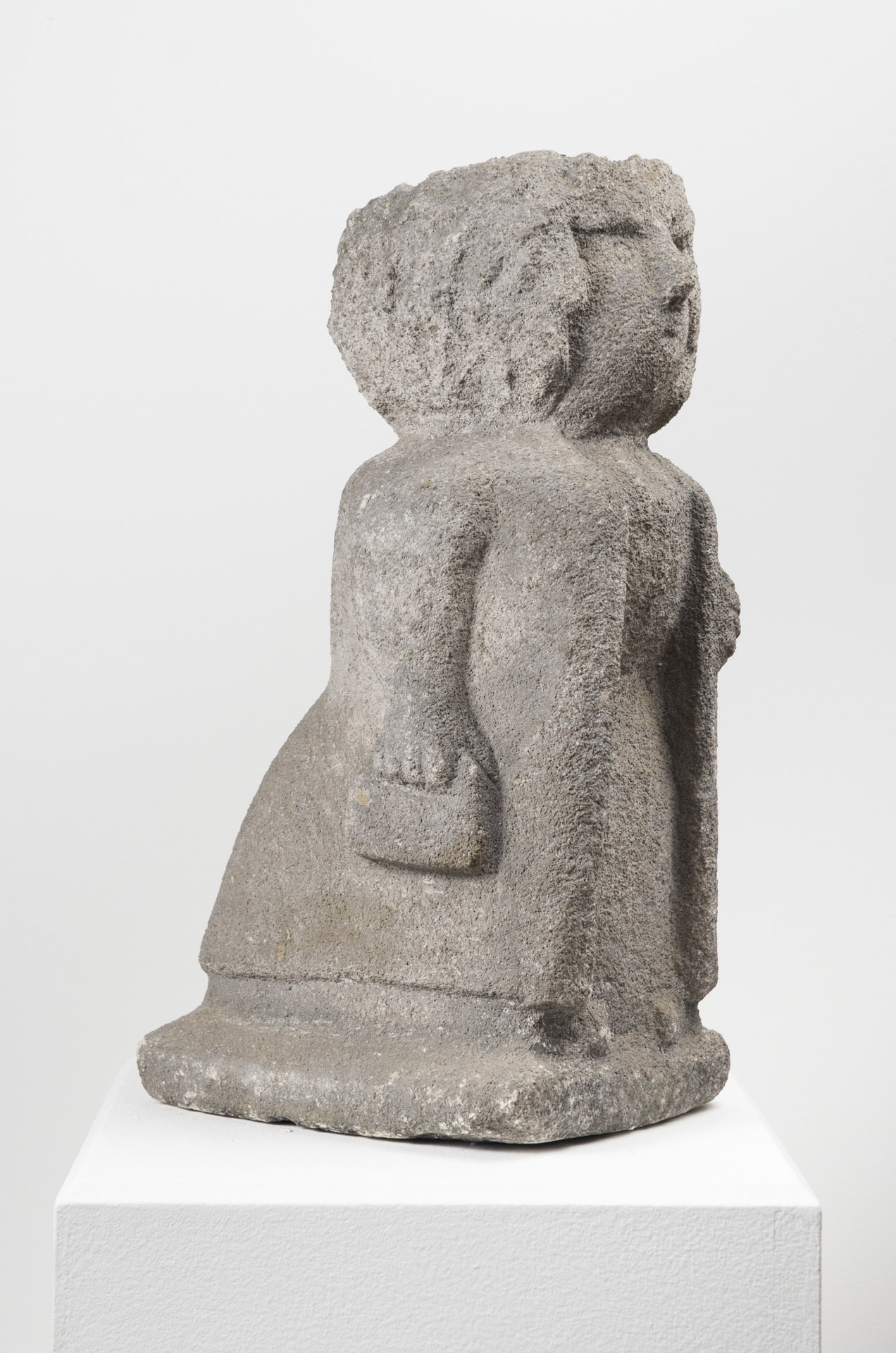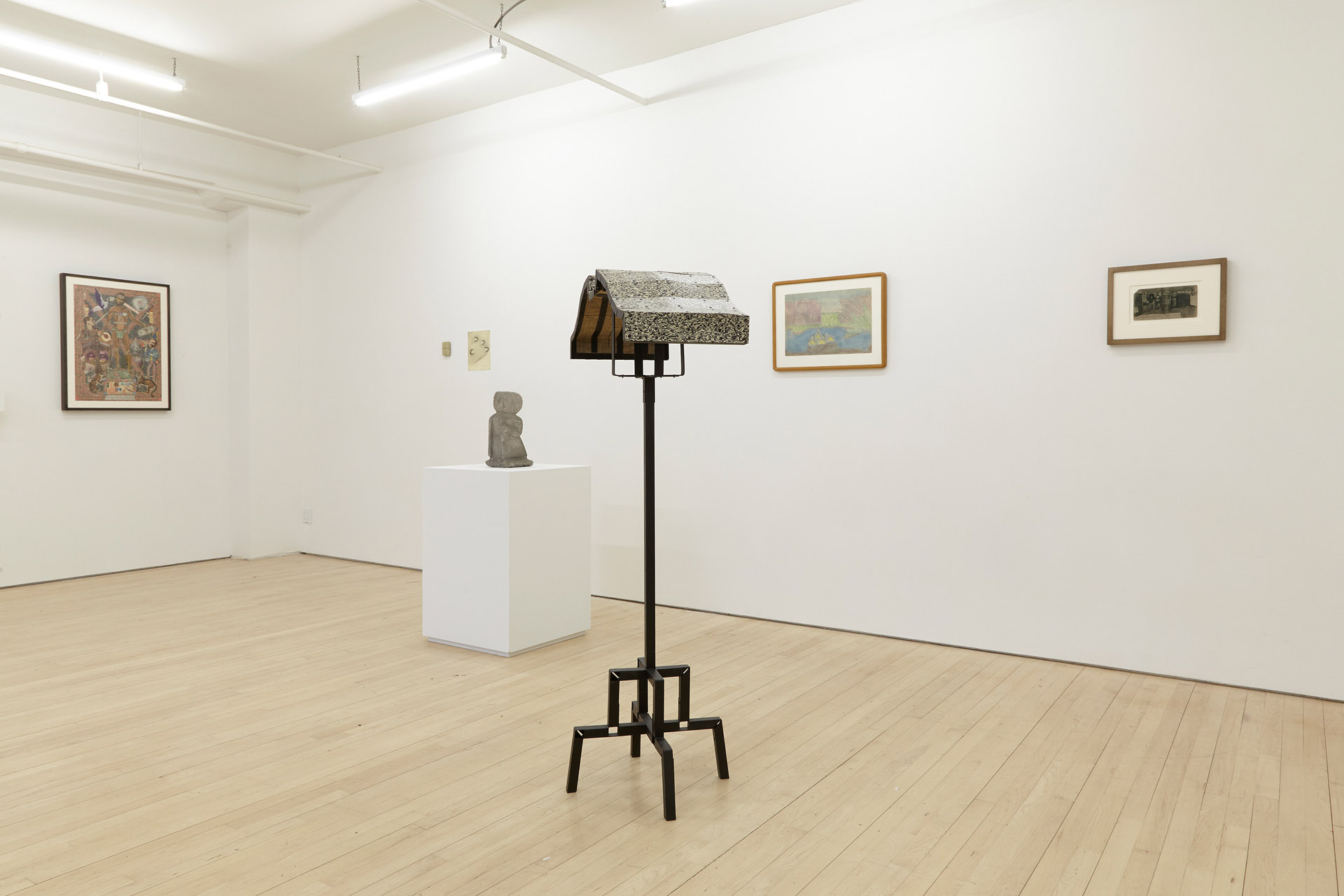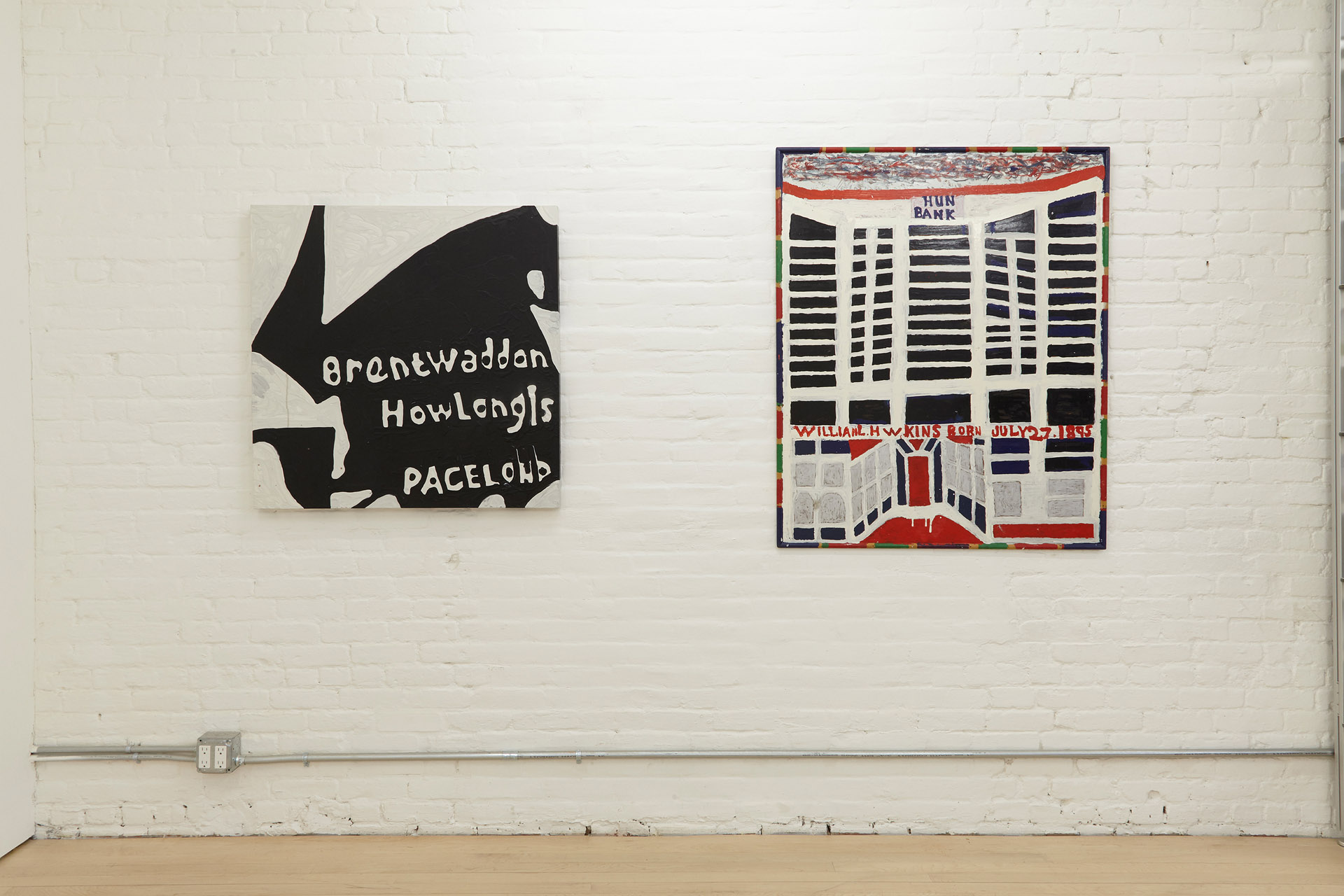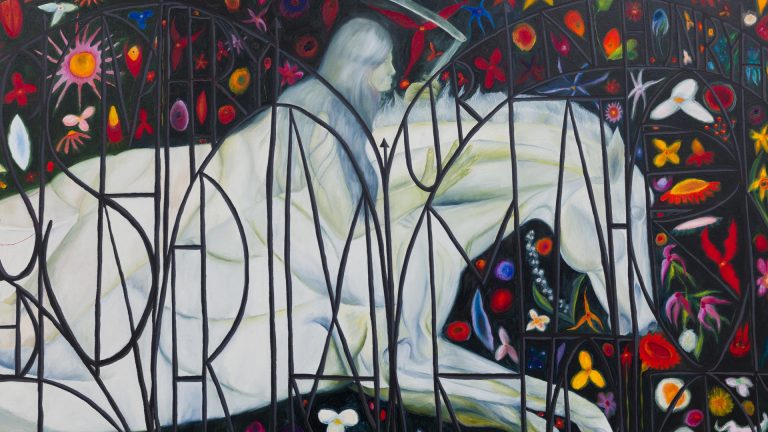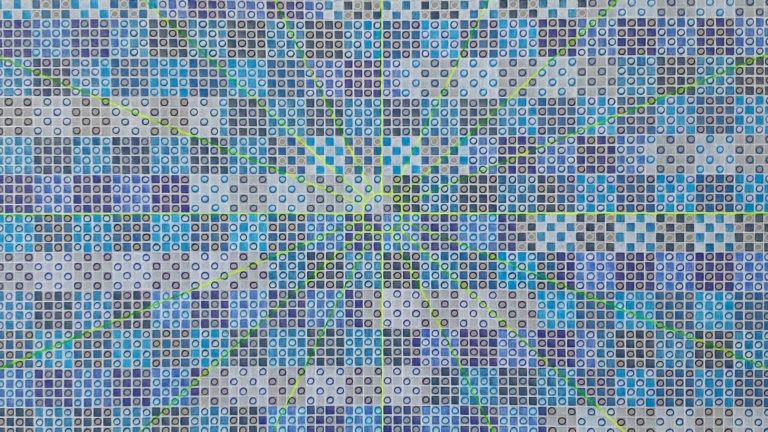Artists: James Castle, Felipe Jesus Consalvos, William Edmondson, Lee Godie, William Hawkins, Marlon Mullen, Diane Simpson, Eugene Von Bruenchenhein, Bill Walton, Philadelphia Wireman, Joseph Yoakum
Exhibition title: Dear John
Venue: JTT, New York, US
Date: March 19 – April 24, 2021
Photography: all images copyright and courtesy of the artists and JTT, New York
March 19, 2021—Adams and Ollman (Portland, OR) and JTT (New York, NY) in collaboration with Fleisher/Ollman Gallery (Philadelphia, PA) are pleased to present Dear John, a bi-coastal exhibition conceived as a special tribute to the legacy of maverick art dealer John Ollman (Fleisher/Ollman, Philadelphia) on the 50th anniversary of his career. Dear John illustrates how Ollman—one of the preeminent champions and scholars of self-taught art in the United States— has challenged conventional hierarchies, brought non-traditional art forms to light, and pursued varied interests from ethnographic to 20th and 21st Century self-taught art.
Attributed with championing Bill Traylor, Martín Ramírez, James Castle, Philadelphia Wireman, William Edmondson, Henry Darger, and countless others, John Ollman is one of the—if not the —leading advocates for self-taught artists, establishing their legitimacy in collecting and the contemporary art market. Ollman was a pioneer in dissolving labels, with an emphasis on identifying an artwork’s quality regardless of how it was classified. Starting off in the ’70s as the director of Janet Fleisher Gallery, he started showing works by African, Oceanic, and self-taught artists when it was unstylish.
Ollman’s leadership is also marked by empowering younger voices, playing a crucial role in the origin of Amy Adams’ and Jasmin Tsou’s respective galleries and fostering a new generation of art dealers presenting self-taught artists within a contemporary art context. “It occurs to me now that we instinctively wished to spread John’s lessons to others,” relays William Pym, who worked closely with John at Fleisher/Ollman in the early aughts.
The west coast iteration of Dear John at Adams and Ollman will feature major works by James Castle (1899–1977) in conversation with a range of works by contemporary artists including Katherine Bradford, Vaginal Davis,
Lois Dodd, Jessica Jackson Hutchins, Jeffry Mitchell, Emily Mae Smith, Jessi Reaves, Becky Suss, Ricky Swallow, Willa Wasserman, among others. Ollman has a special relationship with Castle’s work; he first exhibited Castle in 1998 and continued to champion his work and career from the discovery stage through recognition by major museums. Much like Ollman’s direct and indirect influence on the field of self-taught art and new generations of gallerists, artists, and writers, Castle’s work continues to reverberate. The exhibition is accompanied by a text written by UK-based gallerist and writer, William Pym: https://adamsandollman . com/See – it – All – William-Pym
The east coast iteration at JTT will include artists that John Ollman enthusiastically shared with Jasmin Tsou during the formation of her program, as well as artists that JTT now represents as a result of Ollman’s influence on her understanding of art history. This presentation will include works by Marlon Mullen, Diane Simpson, Bill Walton, James Castle, Felipe Jesus Consalvos, William Hawkins, Philadelphia Wireman, Eugene Von Bruechenhein, Joseph Yoakum, William Edmondson, and others.
Coinciding with the presentations at Adams and Ollman and JTT, the online archival presentation “Back Stories” by Fleisher/Ollman will be available at the gallery’s website: https://www.fleisher-ollmangallery.com/
***
On November 13, 2010, I took a bus to Philadelphia for a tour of Fleisher Ollman’s Four Decades exhibition, a show organized on the occasion of John Ollman’s 40th anniversary at the gallery. A dear friend Jonathan Berger, who has a gift for acknowledging true visionaries, suggested I meet John. When I found out that he would be giving a tour of the exhibition I thought it would be a non-intrusive way to introduce myself to him.
At the time I was working as a director of Kimmerich Gallery in Tribeca, but I didn’t have much of a vision for my future outside of knowing that galleries were a special, weird, and autonomous corner of the world that I worked well in. I was in a dreamy and uncertain time in my life where I thought I might work as a director of a gallery forever, or maybe become a curator (a role that requires a type of rigorous academic memory I lack and would have been horrible at), or maybe pursue a career as an artist, or maybe one day I would do the impossible and open a gallery. In either of these roles, John was an inspiration and a logical mentor for me to pursue.
The gallery was on a second floor space on Walnut Street with dark concrete floors and dramatic spot lighting. When John started the tour he dove right into the art objects and the artists that made them, not stopping to digress on himself or engage in gratuitous pleasantries with visitors. The artist list for Four Decades included 36 artists, many of which are incredibly important to me now, but at the time I only knew three: Joseph Cornell, Forest Bess, and Charles Burchfield. That day, as John walked an attentive group of visitors through the past 40 years of his life, I learned who Bill Walton, Ray Yoshida, Joseph Yoakum, Philadelphia Wireman, P.M Wentworth, Bill Traylor, Tramp Art, Edgar Tolson, Martín Ramirez, Christina Ramberg, Horace Pippin, Jim Nutt, Frank Jones, Jess, Morris Hirshfield, William Hawkins, Howard Finster, William Edmondson, Felipe Jesus Consalvos and James Castle were. Object by object, John entirely disturbed my understanding of art made in America during the 20th century and unveiled the many histories that I didn’t know. I saw a Christina Ramberg for the first time,
and I don’t mean for the first time in person, I mean for the first time ever. John has that old school dealer way of teaching history through delicate and overlooked objects themselves. The most memorable work for me was a small wall bound Bill Walton titled, West Main 131, n.d. made of a block of wood with a few pieces of lead wedged into a small split. Its surface was rubbed carefully with a brass leaf, gently confusing the wood’s materiality. I would learn that day that Bill Walton was a sculpture artist who made delicate post-minimal objects in the ‘80s, ‘90s and early 2000s, all of which are intentionally undated. Walton started as a printmaker and his obsession with the process of spreading ink thickly on a metal plate would launch him into a career of carefully altering the surfaces of objects. A year and a half later when I opened JTT, I would open with a solo show by Bill Walton curated over two spaces in collaboration with James Fuentes. John would generously consign me Bill Walton’s work for the show. But for that evening, West Main 131 stole my heart.
At the end of the tour, John showed his guests a small note that he wrote Janet Fleisher when he was 26 years old, applying for a job as director of her gallery, and I felt an ambitious if not superstitious connection between John and myself (November 13 is my birthday and I turned 26 that day). When looking back on my journey to owning a gallery, the connection I made between myself and John that day would be the single most inspirational event to allow me to take my dream of starting a gallery more seriously.
After the opening I attended what I would later learn is a traditional post-opening dinner at John’s home. The tables were covered with generous portions of sliced meats and cheeses that was uncommon to the New York openings I was attending at the time. In his living room Bill Traylors were carefully hung to avoid sunlight, and Howard Finsters lined the stairwell up to the second floor. That night John gave another tour of his home where I learned about Lee Godie from a small grid of photographs of hers that hung in John’s study. Lee Godie (1908-1994) was a self-identified Impressionist who worked anachronistically in the 1970s in Chicago, known for her paintings and photographic self portraits taken in photo booths. She appropriately spent a significant amount of time in and out of the Art Institute of Chicago which has an impeccable Impressionist collection, giving her a notorious reputation for Chicagoans who would see her working on the street. John proudly told a story of how he bought a painting from Godie off of Michigan Avenue, a feat considering that Godie stubbornly held onto her work. John knows so much about art in Chicago. He taught me about Joseph Yoakum (1890 – 1972), a trail guide for circuses in the early 1900s who wouldn’t start drawing until the 1950s, when he settled down in Chicago and drew delicate renderings of the country as he remembered it. Yoakum influenced Jim Nutt’s work greatly, and Whitney Halstead would share Yoakum’s work with all of his students at the Art Institute of Chicago, influencing much of the Imagist’s works. The knowledge of Godie and Yoakum that John imparted on me gave me context for understanding Diane Simpson’s (b.1935, Joliet, IL) work when Matthew Higgs would introduce it to me almost a year later.
It was all too much to absorb in a single night, over the past ten years I have been returning to Philadelphia to John’s gallery where he tells me stories about the art he loves. John sometimes invites me to his storage room where he casually pulls Nazca ceramics off of shelves, carefully pointing out the variations on the surfaces of the objects in his collection. John has taught me about different techniques of conservation over the 20th century and that he always preferred the ones that were only gently cleaned leaving the slightest amount of dust from the original site, detesting when conservators over polished the ceramic or covered the surface in shiny wax. No matter what the object was, whether it was a gnarly Memory Jug or a delicate Ramirez, John always punctuated the presentation of an object with, “Isn’t it fantastic?” He has an adoring gaze to the objects he loves, that is unparalleled in the world of art dealers. John has taught me about the Philadelphia Wireman and how they were found in a dumpster on South Street in Philadelphia by a chance flash of a car’s headlight hitting a reflector in one of the small sculptures. John taught me about Eugene Von Bruenchenhein (1910 – 1983) and that all of his sculptures were made from the mud of his backyard and cooked in his own kitchen oven. John taught me about James Castle (1899 – 1977), and how he would mix soot with his own saliva to make drawings or how he would pulp the color out of found advertisements, print media or mail, again mixing it with his own saliva to add color to his works.
I know a lot of what I know about the artists in Dear John because of what John has told me, and less because of what I have read about them. He imparts on me, and continues to daily, an oral history that is so specific to his style of art dealing. He devotes his life to telling the stories of those disenfranchised by the educational system and the art world. Ten years after his 40th anniversary exhibition, and nine years after owning my own gallery, it is with gratitude and appreciation that we honor John with this 50th anniversary show.
Dear John, 2021, exhibition view, JTT, New York
Dear John, 2021, exhibition view, JTT, New York
Dear John, 2021, exhibition view, JTT, New York
Dear John, 2021, exhibition view, JTT, New York
Dear John, 2021, exhibition view, JTT, New York
Dear John, 2021, exhibition view, JTT, New York
Dear John, 2021, exhibition view, JTT, New York
Dear John, 2021, exhibition view, JTT, New York
Lee Godie, Untitled (Eight Self Portraits), c. 1980, unique photograph, 5h x 3.75w in, 12.70h x 9.53w cm
Eugene Von Bruenchenhein, Untitled (Pink Vessel), n.d., painted ceramic, 7.50h x 5.50w x 5.50d in, 19.05h x 13.97w x 13.97d cm
Eugene Von Bruenchenhein, Untitled (Peach Vessel with open top), n.d., painted clay, 8h x 5w x 5d in, 20.32h x 12.70w x 12.70d cm
Philadelphia Wireman, Untitled (wire, plastic ribbon, paper), c. 1970-75, wire, found objects, 3h x 2.25w in, 7.62h x 5.72w cm
Philadelphia Wireman, Untitled (Masking tape drawing, yellow stopper), c. 1970-75, wire, found objects, 5h x 2.50w x 2d in, 12.70h x 6.35w x 5.08d cm
Philadelphia Wireman, Untitled (wire, cellophane, red plastic), c. 1970-75, wire, found objects, 2.50h x 1.50w in, 6.35h x 3.81w cm
Philadelphia Wireman, Untitled (Straw, blue plastic pen cap), c. 1970-75, wire, found objects, 4.25h x 1w x 1d in, 10.80h x 2.54w x 2.54d cm
Felipe Jesus Consalvos, Such Things Happen in The United States, c. 1920-1960s, mixed media collage on paper, 29.75h x 21.88w in, 75.57h x 55.56w cm
Bill Walton, Red Dog/Irish Setter (Red Dog Silver), n.d. (c. 1995-1999), painted deck of cards, silver wire, graphite and varnish on paper, 10h x 17w x 1d in, 25.40h x 43.18w x 2.54d cm
William Edmondson, Untitled (Nurse), c. 1940, carved limestone, 14h x 6w x 7d in, 35.56h x 15.24w x 17.78d cm
William Edmondson, Untitled (Nurse), c. 1940, carved limestone, 14h x 6w x 7d in, 35.56h x 15.24w x 17.78d cm
Joseph Yoakum, (Title faded), n.d., colored pencil and ballpoint pen on paper, 11.25h x 17.50w in, 28.58h x 44.45w cm
James Castle, Untitled (Interior with Stove, Framed Pictures), n.d., soot and saliva on found paper, 4.88h x 8.75w in, 12.38h x 22.23w cm
Diane Simpson, Collar (Pagoda), 2013, painted aluminum, linoleum, rivets, 56h x 30w x 16.50d in, 142.24h x 76.20w x 41.91d cm
Marlon Mullen, untitled, 2016, acrylic on canvas, 36h x 36w in, 91.44h x 91.44w cm
William Hawkins, Hun Bank, 1983, enamel on masonite, 48h x 39w in, 121.92h x 99.06w cm

